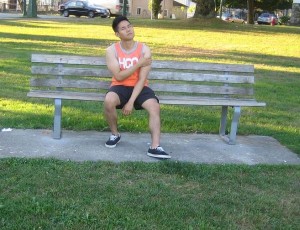The biceps are muscles positioned in the front aspect of the upper arm and extends up to the shoulder and down to the elbow. Torn biceps involves a tear in the biceps tendon which is an injury that is considered common but the exact cause is still unclear.
Even though the tendons can end up torn at either end of the muscle, the one that connects to the shoulder is responsible for most cases of bicep ruptures which occurs once the bicep tendon detaches from the bone. Remember that it is vulnerable since it passes through the shoulder joint which is utilized and oftentimes overused by athletes in various sports.
How torn biceps develop
The tendon close to the elbow is either strained or torn once an individual absorbs an unforeseen amount of force or during a strong pushing movement. The impact can cause either partial or complete tears in the muscle or tendon tissue that might be already worn or frayed if the individual is over 40 years old.
Once a tear involves the upper part of the biceps at the shoulder, the outcome is the same but it is likely due to overuse. Among older athletes, a torn biceps might be linked with a tear in one of the 4 rotator cuff muscles.
Who are at risk for torn biceps?
It is important to note that weightlifters face the highest risk due to the load regularly placed on the biceps. Ending up with torn biceps while engaging in curls is how the damage develops. Skiers, football players, gymnasts, rowers, tennis players, boxers and throwers also face the risk.
The older athletes are also prone to end up with torn biceps than younger athletes. Men are more likely to tear the biceps tendon. Any individual who had a formerly torn biceps injury is expected to end up with a similar injury.
What are the symptoms?
- Abrupt pain in the upper arm but minimal pain with tears at the shoulder than those close to the elbow.
- Loss of strength
- Possible snapping sound
- Tenderness in the shoulder
Abrupt pain in the upper arm but minimal pain with tears at the shoulder than those close to the elbow. - Bruising from the upper arm to the elbow
- Bulge in the upper arm or dent near the shoulder
- Difficulty when bending the elbow and rotating the forearm outwards
- Muscle spasms
What is the initial treatment?
- You can apply an ice pack for 15-20 minutes at 3-4 times throughout the day for the initial 48-72 hours.
- The individual must avoid any activity that triggers shoulder pain or weakness.
- Moist heat can be used for 15-20 minutes at 3-4 times throughout the day after the first 48-72 hours to reduce the pain.
- Pain medications such as acetaminophen, aspirin, naproxen and ibuprofen can be given to minimize the pain.
- For full tears, surgery is required. As for partial tears, they can heal with the help of conservative treatment.
- Once an evident defect is seen, a doctor should be consulted.

